
Originally launched as a lightweight belay jacket six years ago, the Nuclei FL was only on the market for two years before being withdrawn. By then it had developed something of a following among Arc'teryx's athlete base and the climbing community. Users loved its lightweight synthetic warmth and quality of materials, although some felt it could have done with internal pockets and a two-way belay zip. Re-launched as a hero piece for Spring 2020, the next-generation Nuclei FL was therefore highly anticipated - could the cult classic be improved?
Admittedly it isn't the shiniest new thing on the block anymore, but we can say hand on heart that the testing period has been long and thorough with the Nuclei FL put through its paces as an insulation layer for ski touring, multipitch climbing, mountaineering-style scrambling and lockdown-appropriate daily exercise.
Insulation is like that scene with the cave in The Empire Strikes Back where Luke is training on Dagobah. "What's in there?" "Only what you take in with you". As someone who makes heat slowly and loses it fast, I am always looking for warm layers that can loft up and be put on quickly so I can retain as much heat as possible.
While many lightweight insulation jackets deal with dry cold at altitude, fewer provide enough warmth in the delightful bone-chilling wet air factor of the British climate. This should be where synthetic insulation comes to the fore, and I was really pleased that the Nuclei FL fits the bill.
Fill/Fabric
At 294g on the scales (women's size M), the Nuclei FL is pretty light for a warm hooded jacket. The technology behind this is Coreloft Continuous 65 (65g/m²) synthetic fill combined in panels with a windproof ripstop Arato 10D nylon upper. This structure is important - fewer panels and no baffles means no clumping (which can lead to cold spots) of insulation, and fewer stitching points where the wind can sneak in. The looser weave also makes it more breathable than the original. However, breathability is relative, and as this jacket doesn't let much in, it also doesn't let much out. If you were to wear it on the move you would get sweaty pretty quickly. You may start a walk-in with it on, but unless in winter conditions, you will most likely have it off within a few minutes.
The CoreLoft insulation is really good, consisting of fibres randomly tangled in sheets to mimic down. These not only trap, but also somehow suck in/inflate with air, even when deployed from bunched up in the stuff sack. This means it gets puffy and traps warmth super quickly (I've personally found it warmer than similar weight PrimaLoft Gold). You will particularly notice the loft and airiness when you try to get it back in the stuff sack and end up with a windsock for a sleeve. I certainly found it warmer than any other remotely carriable synthetic layer both in sub-zero winter conditions and when soaking wet - two situations where I definitely feel the cold. (The combination of soaking wet and sub-zero has yet to be tested - sounds like Type 2 fun...)
The superlight 10D Arato nylon upper is very thin, but objectively tougher than the outer on the previous Nuclei FL, offering good durability and weather resistance for its weight. In terms of feel, I'd call it shiny soft – okay next to skin and slides on and off over other layers well, while definitely not as clammy as some other lightweight outers.
After nine months of testing the upper is doing pretty well. When the jacket was being worn, the outer fabric held up to the abrasion of pack straps, harness rub and Cornish granite, also emerging intact from a traumatic bramble-snagging incident while blackberrying with my grandma. However, I've found it slightly more abradable/snaggable when not being worn. When packed tightly into the stuff sack, the surface is extremely taut, so the fabric quickly rubbed through on the back of my harness on a squeezy trad route. Equally, when shoving it unstuffed into your pack, beware that the light outer is at risk of getting caught and munched by heavy duty pack zips.
The whole jacket has washed well without any special treatment, retaining its weather resistance. I also don't get the sense that the insulation sheets are breaking down or bunching up in the way that some do over time.
Fit
Designed by women for women, the fit is definitely better than other Arc'teryx jackets I've tried, which have either been a bit tight in the chest and shoulders, or a bit square. In a size medium I find it is both longer in the body and roomier than Arc'teryx's down jackets in the same size, and possibly slightly slimmer than the Atom LT.
The cut is both fitted and active. A dropped hem at the rear gives plenty of back coverage to keep you warm. When worn beneath a harness, there is still enough room in the shoulders to climb and panels in the armpits give free overhead arm movement. It also layers well.
Though I find the sleeves too long (so have some bagging at the wrists), I do have a negative three ape index, so those with proper climber arms should find themselves well served. The cuffs are simple (elasticated taped), in line with the Nuclei's lightweight design. They have enough play for layer transitions over most gloves, but for bulkier winter gloves, expect to have to do a bit of fiddling, or prepare for a gloves-off transition.
As befits a fast and light piece, weight has been cut by keeping the adjustment hardware minimal. There are three drawcord toggles, two in the hem and one for the helmet-compatible hood. The latter is fully insulated and cinches with a cord that runs hat-brim style around your head, so you can achieve a solid fit with or without a helmet. However, beyond a semi-elasticated rim, there is nothing to regulate the opening at the sides of the face, so this can mean cold cheeks and a potential spot for wind to get in. The chin guard comes to below the nose, meaning that the lower half of your face can be well protected.
Features
Pocket-wise there are two zipped handwarmer pockets on the outside (top half of pocket accessible in a harness) and two drop pockets on the inside. The drop pockets are one of the new features in this iteration of the Nuclei FL, and are deep enough to carry large gloves or keep your climbing shoes warm between boulders on a cold day.
The zip pulls and toggles are sleek and minimalist, yet doable in gloves. However the notable absence (as per the original Nuclei FL) is a two-way belay zip. For a jacket designed for the static phases of alpine or multipitch climbing, this seems like a massive oversight and is my one major bugbear with this jacket. Of course you can roll up the bottom hem or spend time tucking yourself into your harness, and yes, extra zip function would add a teensy bit more weight... but having one really would make it a brilliant belay jacket.
Sewn into the right-hand drop pocket is the integrated stuff sack - an inside-out Arato nylon bag. This means you know where it is and can't lose it. It has a robust attachment tag suitable for clipping it to your harness which when racked feels perfectly secure. The shape and weight of the stuffed jacket mean it isn't an onerous bulky object throwing you off balance, but as mentioned above, tightly packed it is a bit liable to abrasion. Deployment of the jacket from the stuff sack is fast, which combines with the inflating insulation to ensure you get layered up before losing too much heat.
Women's vs Men's
The women's Nuclei FL comes in Ultralush (lime), Hyperspace (red) and Exosphere (navy) in sizes XS-XL and the men's version comes in Paradigm (petrol blue), Dynasty (red), Nucleus (gold), Cinder (black) in sizes XS-XXL. There is no difference in price or feature set between them, just the cut.
Summary
At £250, the Nuclei FL definitely comes in at the top end of the lightweight synthetic hoody spectrum, but it is very warm for its weight, very light and made to a high quality. I have pretty much taken it everywhere as it's so packable and versatile. Now if only it had a two-way zip…
Arc'teryx say:
Fast and light alpine travel's static phases require thermal comfort and wind protection to offset uncomfortable conditions. Sparked by repeated athlete demand, and designed specifically by women for women, the next-generation Nuclei FL Jacket is lighter, warmer, stronger, and offers outstanding thermal performance for remarkably little weight. The Arato™ 10D fabric is windproof and alpine durable, Coreloft™ insulation is efficient and resilient, and a helmet-compatible StormHood™ gives additional warmth.
For more info see arcteryx.com










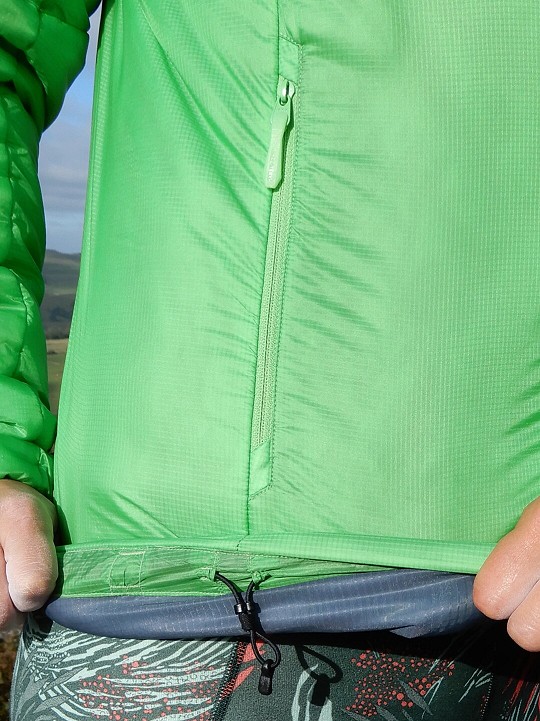
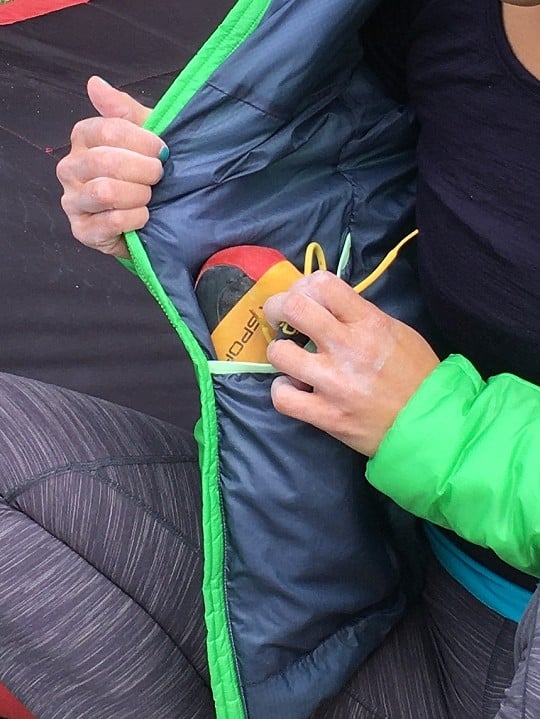
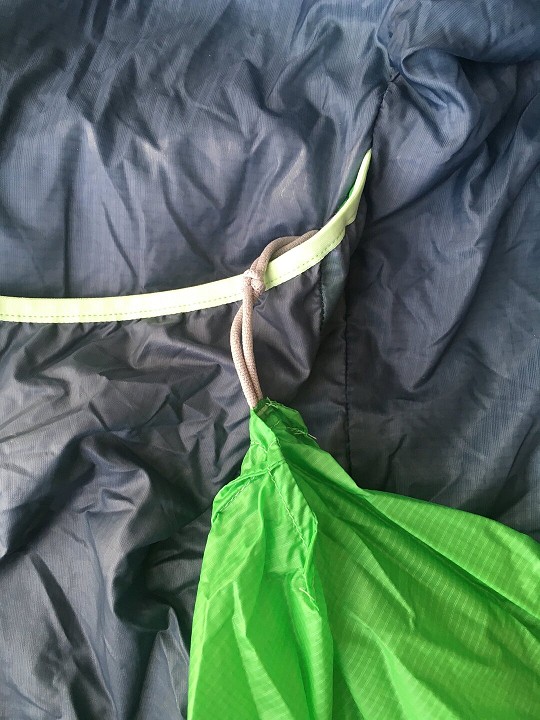


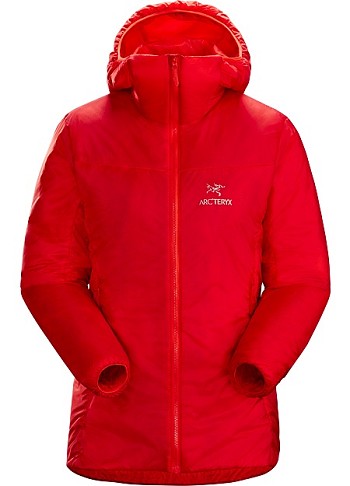




























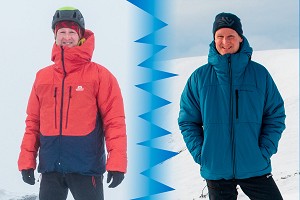



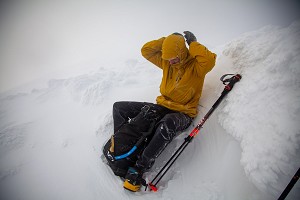



Comments
Awesome review, as usual on UKC. I take it upon myself to start the ball of silly questions.
Arcteryx Nuclei FL or Montane FLux ? The Nuclei FL is lighter and has probably a better quality of insulation. But the Flux has more of it, a two-way zip and is cheaper. Which one would you recommend? I've got a ME Citadel, which I love and has saved my cold self several times, but at 800g it's definitely not a "fast and light" piece.
I wondered how this compared to a nanopuff. Weight wise they're similar, but use wise they appear very different.
"a hero piece" what does that mean ? or it it just meaningless PR talk
You are correct. It's a marketing thing, for when a brand picks a few items for showcasing for a particular season ie targeted ads, in use shots, montages.
Yes, but the atom, albeit heavier than the nuclei FL, is marketed as a mid-to-outer layer. And, to be honest, the entire Atome series sits in an odd place in the arcteryx line, to the point where I don't really see it's intended use. The Flux and Nuclei FL seem to both target the same audience of "lightish belay jacket" users. But I agree the Nanopuff could also be added to the list.